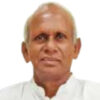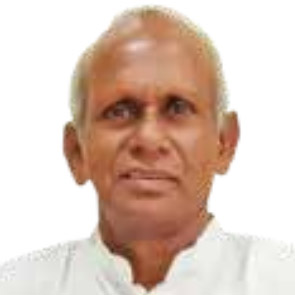Silence is not to be confused with being speechless. One may not speak. It does not mean one is silent. The rattling continues inside. Silence is of the mind. When all the restless agitations and disturbances of thoughts (vrittis) are eliminated, there arises silence. It is cosmic and its immensity cannot be measured. It is a substance in itself because of this deeper silence, all manifestation takes place. This silence is deep, all sounds, noise, and confusion created by thoughts merge with it. It does not vary from individual to individual, or from region to region. Its nature is the same. It is non-transmittable. It can only be experienced. A thought, a substance by itself, is formless (nirguna) and fixed.
When all physical actions are brought to a standstill, silence in the body happens. Can we sit firmly on the hard, motionless ground, feeling its firmness? Can we establish a connection with this? When the body becomes motionless and silent, we can feel and experience the changes within the body. The blood circulation becomes even, breathing becomes steady and rhythmic, muscles, tissues, and bones gain suppleness. Some contact with silence and space is established. But this is physical. Words recede into space. The body is given some rest. And in the wordless space, silence is experienced as a substance. Thoughts and emotions alone are not substances. Silence too is a substance. The mind goes to rest.
All these inner changes have a direct bearing on the mind. Thoughts too will become steady, but do not make any rattle. They become passive as you remain a passive spectator. They march like soldiers in a parade. Thoughts, even more destructive, will become harmless because there is no interference. The rise and fall of these thoughts subside like a quiet sea. After some time when this quietness is deepened, we can experience its bottom rock, its immensity, its depth, its profundity. A few seconds of experience of it can be widened to a minute and a few minutes. It is not an achievement, it is attainable. Your viewpoint on life will shift as a result of daily practice. It will significantly affect your job, your relationships, and the environment.
It has to happen on its own. It cannot be obtained, but has to be attained. Communion without words is subtler than communion with words. When we are in front of a flower and do not use any language but simply see it effortlessly and intently, its colour, its form, and so on, certain transmission between us and the flower takes place. Seeing instantly and intently without words is meditation. Silence is meditation; meditation is silencing thoughts. When thoughts disappear, words too. Then, language becomes insignificant before the beauty of a flower. Such is the power of a flower. If a tiny flower has such immensity of withholding the seer, imagine how much the whole creation should have. Silence is infinite.
There once was a well-known ordinary man. He was referred to as a mystic. He did not, however, assert that he was a mystic. He consistently insisted that he was an ordinary man. Nevertheless, he was highly revered by those who sought his life advice. He was once approached by a young man who was eager and restless, a life novice who wanted advice on starting over in life. He boldly addressed himself to the common man and waited for his response.
The ordinary person led the young man through a flower garden. Showing a particular flower, he asked the young man.
“What do you see?”
“I see a flower amidst flowers”
“What do you see?” the ordinary man asked again. “It is a flower with pink petals,” the young man replied. Not satisfied, the ordinary man once again insisted. “What do you see?”
“It is a flower with pink petals shooting from a plant.”
The ordinary man pursued with intensity. “What do you see?” “It is a flower with pink petals emitting a beautiful fragrance that is distinct.”
Composed, the ordinary man continued with the same question. “What do you see?” This time, not losing his temper, the young man replied: “It is a flower named as rose, regarded as the queen of flowers.”
Again, the ordinary man demanded a firm reply to his question. “What do you see?”
Exhausted and upset, the young man did not reply. He kept silent, fearing that the ordinary man would once again bounce with the same question. He stood, instead, in front of the flower looking at it intently. Now the language of description has gone dry.
The ordinary man did not persist with his question, “What do you see?”





















